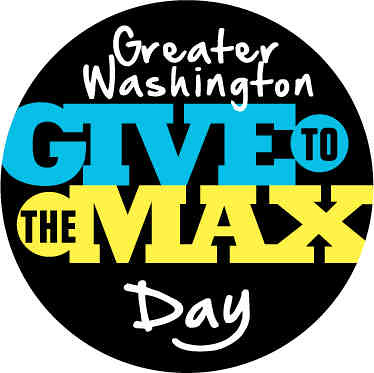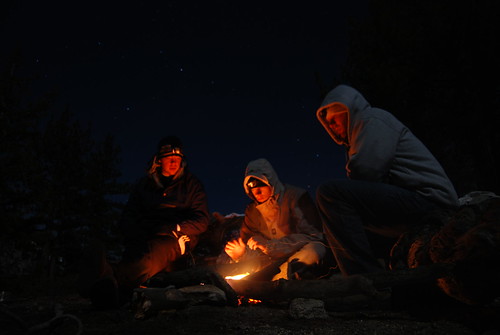
I’m in Washington, DC today to kick off a training event for Give to the Max Day, a one-day fundraising event on November 9, 2011 that will unite local Maryland, Virginia and Washington, DC communities to support nonprofits serving the area. The fundraising goal for Give to the Max Day is to get 35,000 people to support their favorite regional charity, raising more than $3 million in donations and grants in just 24 hours! The training event, which will be live streamed starting at 9:00 am, will feature fundraising and social media gurus Katya Andresen, Danielle Brigida, Tracy Equality Viselli, Jocelyn Harmon and more.
I’ve had a lot of experience with online contests, both as a participant (winner) and working two reflection papers for the Case Foundation‘s America’s Giving Challenge. I’ve also been a critic of contests that were not designed to build capacity of the nonprofitsto adopt good social fundraising practices – such as relationship building, storytelling, and network weaving. Almost exactly a year ago, I was on a panel at BlogWorld with colleagues from the Case Foundation talking about best practices in online contest design. I said that I wished contest designers would take a Hippocratic Oath to do no harm to nonprofits!
The Give To Max Day: Greater Washington has created a local nonprofit giving day and designed a contest that should be a win-win for every nonprofit, even they don’t win any of the case prizes! The one-day fundraiser is modeled after the very successful Give to the Max Day that was launched in Minnesota in 2009 and raised over $14 million in one day for local nonprofits, but also incorporates a contest that will give some extra motivation for nonprofits for getting the most donations or donors. They’ve also leveled the playing field and have a special category for smaller nonprofits (under $1 million budget). And there is also an award category for individual champion, whether board members, volunteers, or a free agent.

I’m kicking off the training day with a couple of campfire stories about the benefits of online contests and how to build capacity before, during, and after such a campaign as well as highlight some stories from the audience. Before the session, I did a survey asking participants about the successes with using social media to win online contests as well as generally with social media and the stories were gems! We’ll use a living case study approach to unpack and share that wisdom in the room.
I used this an opportunity to reflect on my experience as a free agent over the years and while the tools have changed, the principles effectively using social media to fundraising for a cause have not. And while the small nonprofit, The Sharing Foundation, benefited from the prize money, there were also other benefits.
Some tips to build capacity and benefiting from a fundraising contest:
- Get organized both online and offline
- Designate a cheer leader
- Gather your tribe and rally the base
- Get your base to give first
- Keep cheer leading no matter what happens
- Close the circle with thank yous, public acknowledgement, and light touches that aren’t asks
Some wisdom from DC Nonprofits:
JoesMovement: Joe’s Movement Emporium is the community performing arts center of World Arts Focus, a 501(c)(3) charitable organization that was launched in 1992. The mission is to promote participation and practice in dance, movement, and performing arts traditions from around the world while using the arts as a key tool to revitalize community. They used social media to win “Deals for Deeds” contest. While they had a relatively smaller number of followers on Twitter or Facebook, they had focused on engaging their community online. They enlisted help from board members on Twitter, but being organized with a plan and timeline for asks was critical to their success.
Father McKenna Center: The McKenna Center serves the needs of the poor, men, women and children through a variety of programs funded by generous individuals, religious orders and institutions, foundations and government grants. Their use of Facebook was instrumental in winning Sears’ Dads Making a Difference Contest.
Our Daily Bread identifies and addresses the unmet fundamental needs of Fairfax area residents and empowers the community to help our neighbors maintain self-sufficiency. They have successfully used Facebook to identify and cultivate donors. For example, they recently set up an Amazon wish list for their Food Pantry and posted to their FB page. Within minutes, a fan commented that they had just placed an order for them. They said thanks. The next day, a big order of diapers came in from Amazon – and they thought it must be her that donor that left the comment. They checked out the donors’s fb profile, and they could tell that she was in their key target demographic for new $$ donations. When staff research her in their donor database, they discovered she had attended our big fundraiser in Feb. as a first time donor. They sent a thank you email and asked if she’d sent diapers. The donor responded back with a very engaging email that no, it was juice boxes she’d ordered – and she shared that she has a young son and they had attended an event and their mission resonated with her.
NStreet Village: N Street Village is a community of empowerment and recovery for homeless and low-income women in Washington, D.C. They are using social media to get in-kind contributions and volunteer support. “One example is that we were offered a large donation of bras (huge need) but in order for us to claim them we had to drive 40+ minutes away – with a small staff taking 2 hours out of their day to pick up an item is not very efficient. We posted the need for a volunteer to pick the bras up for us and someone who worked in that area but lived close to our organization responded within 5 minutes that they would pick the bras up for us. The benefit – providing friends/supporters an opportunity to help us/feel needed, we didn’t use staff time for the pick up, and got bras for our clients.”
AARP: AARP is a nonprofit, nonpartisan organization with a membership that helps people age 50 and over have independence, choice and control in ways that are beneficial and affordable to them and society as a whole, ways that help people 50 and over improve their lives. They used social media to help win the DC Best Place to Volunteer Contest.
DC Jazz Festival: With more than 100 performances in dozens of venues across the city, the DC Jazz Festival is the largest music festival in Washington, D.C. and one of the most highly anticipated cultural events in the nation. They used Twitter to draw attention to a free concert happening on the Washington, Mall which resulted in 60,000 people attending.
DC Diaper Bank:The DC Diaper Bank works to provide a reliable & adequate supply of diapers to families in need living in the Washington DC metro area. They have connected with many organizations on Twitter. They assigned their Twitter account to the board member who had already been using it personally for a couple years so was very familiar with how it worked and effective using it.
Looking forward to hearing the campfire stories from those participating in this fundraising day on November 9th!

Leave a Reply